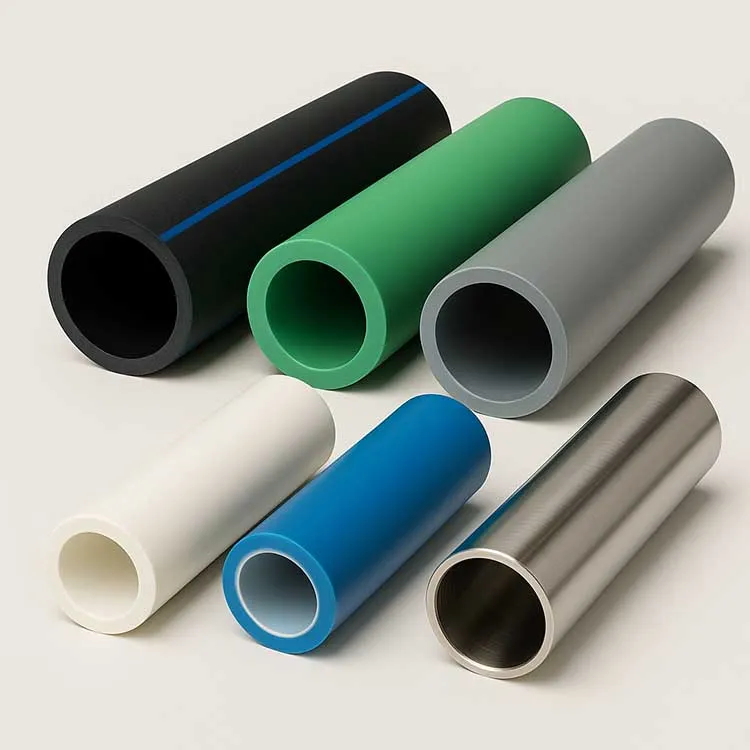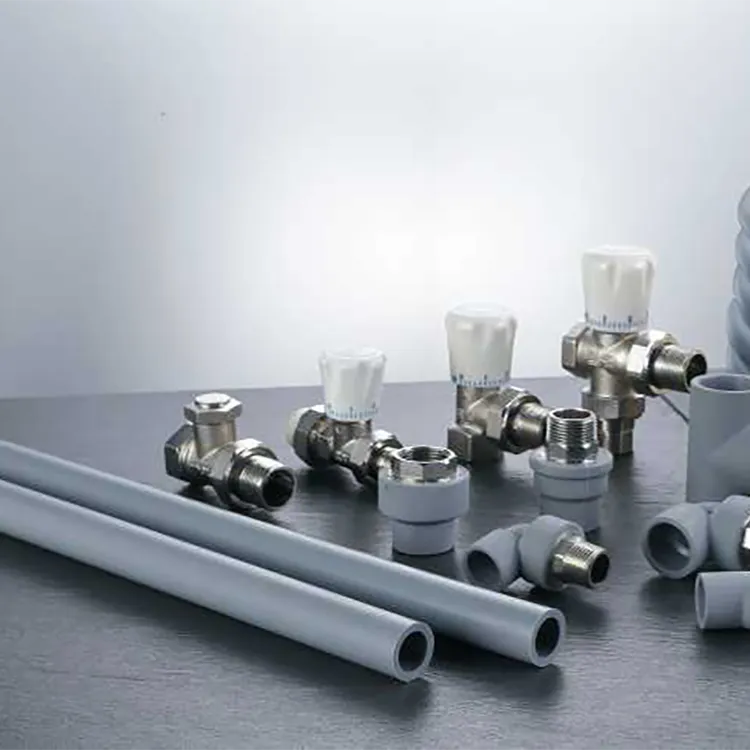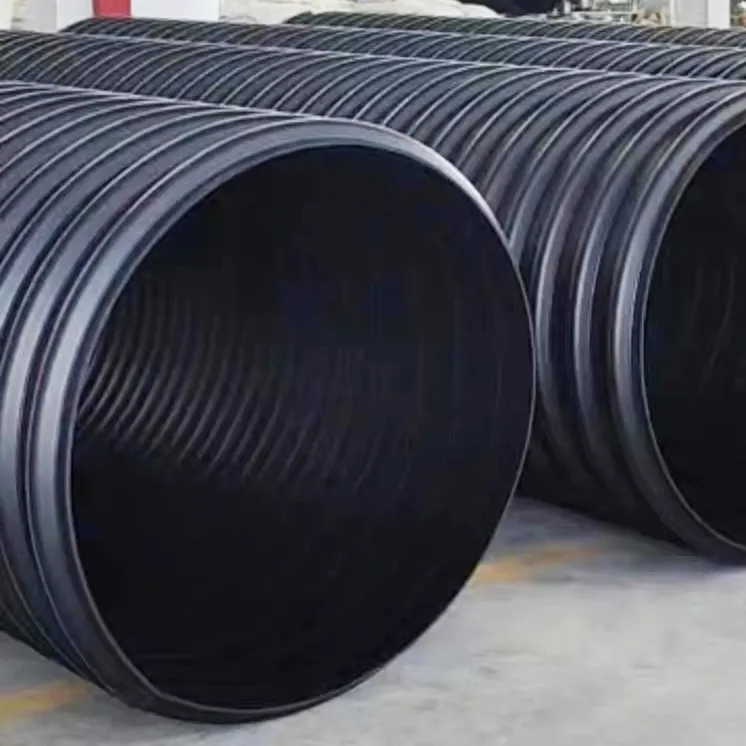Prevention of water leakage in PE water supply pipes

PE water supply pipe is a wide range of pipes, suitable for many industries. Because of its high compressive strength, heat resistance, corrosion resistance, non-toxicity and other characteristics, the application scope is becoming more and more extensive. People's lives cause great harm, so it is very important to prevent the seepage of PE water supply pipes in advance. Let's take a look at the ways to prevent water seepage in PE pipes.
First, the drainage pipe should pass through the floor. When the roof is not fixed and fixed, a steel casing should be installed. When the plastic drainage pipe is fixed and supported at the floor, a water blocking ring should be added. The plastic pipe purchased from the PE pipe manufacturer Be sure to choose the fittings that match the pipes, choose the appropriate fusion method for the interface, pay attention to the thermal expansion and contraction of pipes of different materials, and the spare parts must be thickened. The casing, the casing is flush with the finish twice, in order to prevent the wall from seepage, the surrounding of the casing should be tamped with mortar, the gap between the pipe and the casing should be filled with waterproof caulking raw materials, and the circumferential joints should be symmetrical. To ensure water quality, pressure and cleaning tests must be carried out in strict accordance with the specifications.
Factors causing pits in PE pipes

If there are dents on the surface of the PE pipe, it will have an impact on our application. Usually we should pay attention to what is the cause of this phenomenon. During the production process, if the humidity of the raw material is very high, there will be many voids on the surface of the produced PE pipe, which is the cause of dents. main reason.
If the bubbles of the PE pipe are on the surface of the pipe, it is what we often call dents. As long as the moisture content of the PE pipe is reduced before the production and processing of the raw materials, the formation of blisters can be reduced. During the production process, if the amount of water is uneven If so, it will cause dents on the surface. I hope that everyone will strictly follow the operation requirements in the production process to prevent unnecessary troubles.
Noise of PE water supply pipe

With PE water supply pipe fittings replacing traditional ordinary drainage cast iron pipes, it is basically a foregone conclusion, but the drainage noise of ordinary PE water supply pipe fittings is higher than that of traditional cast iron pipes. If the drainage riser is close to the bedroom, coupled with the sound insulation of the cast-in-place floor The actual effect of noise reduction is relatively poor, and residents can significantly feel the noise of PE water supply pipes, which endangers everyone's normal rest. The selection of super quiet PE water supply pipe adds a unique sound-absorbing material, and the noise is lower than that of the drainage cast iron pipe. Comparison of noise levels of various pipes (Φ110mm): U pipe 58db; cast iron pipe 46.5db; super quiet PE water supply pipe 45db. After testing, the noise of the UPE water supply pipe is 2 to 3 decibels greater than that of the cast iron PE water supply pipe at the bottom layer, and does not exceed the norm for daily noise requirements.
PE water supply pipe color characteristics
Everyone's more common PE water supply pipes are usually all black, but when they went to buy, they found that there were white ones on the pipes, so I was very curious whether this type of pipes was black or white. PE water supply pipe is the base plastic, plastic packaging bag, PE roll paper, etc. The original shape of HDPE is white, with a small cross-section and part of it is translucent. Polyethylene plastic has high-quality chemical raw material properties. Water supply PE pipe is a traditional transformation product of iron element steel pipe and polyethylene beverage pipe. The water supply pipeline bears the necessary working pressure. PE resins with high molecular weight and excellent physical properties, such as HDPE resins, are usually used.
PE, especially HDPE resin, has become a common pipe material for manufacturing drinking water pipes because of its high hygienic index. Because HDPE resin has the characteristics of fluidity, it is convenient for production and processing, so the selection range of melt index is very large. Adding black PE color masterbatch in production is the key to avoid ultraviolet radiation and prolong life. This type of hose is mainly suitable for outdoor use. White tube, if white glue is added during production, it is impossible to avoid ultraviolet radiation. At this stage, the drinking water project uses black water pipes outdoors and white water pipes indoors. The black PE pipe has a kind of anti-ultraviolet effect, but it cannot be said that the white pipe is not very good. It is just that the commonly used colors are different under different construction sites and applications. In this way, everyone can take this level into consideration when purchasing such pipes.
How to detect PE pipe

PE pipe pleasure test
Does the PE pipe meet the application regulations? As a professional manufacturer, it has its own test standards. What are the actual test standards for PE pipes?
First of all, the inspector must record all kinds of data and information of the sampling inspection product, including the long-distance dripping experiment. The recorded data and information must be true and cannot be scribbled. The inspector must carry out the rewinding inspection of the PE pipe delivered by the operator. The inspection items include appearance, irregular forming, plumpness, total number of joints, joint binding status, meters, etc. The inspector must test each roll of products delivered by the operator. The test items include dripping condition, blasting working pressure, wall thickness, single weight, width, and the extraction length during the experiment, which should not be less than 5 meters, and the total number of sampling inspections per roll should not be lower. at once. During the pressure test, the working pressure should be adjusted to 0.1Mpa first to see if the dripping water is uniform. After the dripping water is all normal, the blasting working pressure can be charged and tested. The blasting working pressure should not be lower than 0.28Mpa. If it is lower than 0.28Mpa, then Another section should be taken for pressure-holding experiment, and the working pressure should be maintained in 0.15Mpa hydrostatic water for 1 hour.



981.webp)

 (1)379.webp)

294.webp)
476.webp)
420.webp)
146.webp)
460.webp)
287.webp)
274.webp)
688.webp)


